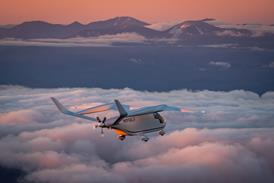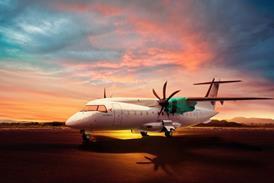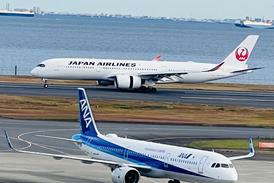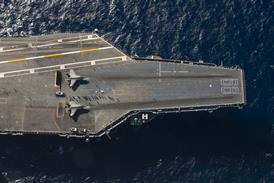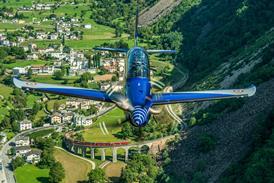The head of the US Army’s unmanned air system acquisition programme office, Colonel Don Hazelwood is calling for a more phased approach to the development of UAV access to US national airspace, warning that the current focus on Class A and B airspace by the UAV lobby is limiting near term opportunities for use of military systems in civil support roles.
He also wants civil regulators to pay more attention to the US military’s current experiences of operating manned and unmanned aircraft in shared airspace in the Middle East theatre of operations. That experience is providing precedents for safe near term access to national airspace he argues, as well as to international airspace.
In parallel however, Hazelwood is warning that UAV manufacturers need to display better understanding of aviation culture if the goal of file and file in non-segregated airspace is to be achieved.
“Many of the vendors don’t understand aviation discipline and culture” he says. “To fly in the national airspace, to get anyone in the [US military] to stand up and go toe to toe with the FAA, we all need to understand what flying in the national airspace means; what aviation culture and discipline brings to meeting those objectives”.
Speaking 31 August at AUVSI’s Unmanned Systems North America conference in Orlando, Florida, Hazelwood said that said “what is keeping me from getting into major discussions [with regulators] is that some of the equipment is just not up to the task. I am not speaking of all of our equipment, but I am saying that some of our equipment needs improvement”.
He said that a major effort underway within the service to overcome accident rates and reliability problems is advancing rapidly: “All of our systems have entered the airworthiness release process…We are not there yet, we have found some problems. We are not hiding them. We are attacking them. We are going to fix the problems that we found and then at the end of the day there is a beginning and an end, and the end there is flight in the national airspace. We will modify our aircraft that fail, we will fix them, we will certify them, and we will fly them in the national airspace. I think the goal of two years is do-able”.
Growth in the Army’s UAV fleets is necessitating “more room to go out and train, so file and fly is a critical objective of ours.”
By 2011 the US Army expects to be fielding some 230 UAV company’s, operating more than 10,000 individual aircraft with funding in place for 7000 at present. In 2001 the Army had just three company’s. “No other country, no other service, has been able to grow at such an exponential rate” says Hazelwood.
The service currently has just under 1000 individual UAVs in the middle east theatre of operations, with this representing 80% of its total air vehicle inventory at the end of 2005. However, as new systems enter service, this is being progressively shifted the balance of the overall fleet back into the US.
By the end of 2006 “50% of our units are deployed and 50% are in the States. So what is going to happen? Probably it will be just like manned aviation. 20-25% of unmanned systems will be deployed and then we will have 75-80% back here in the United States doing what? Counting the 26 cows that reside at Fort Campbell, Kentucky? I don’t think so. I think there are other missions we need to look at.
“Last night on the news there was a missing person, a child missing. Could we not put up UAVs to go out on search missions? Could we not go out and help the forestry department, instead of giving them 2000 soldiers with shovels, could we not send a few UAVs and pinpoint where the hotspots are [in forest fires] and assist them in their tactical operations on where they send out their bulldozers to build firebreaks? Utilise technology?”
Opening up those new domestic missions means the Army has to be able to “fly off the reservation at short notice”. The bulk of current efforts to enable file and fly in the US national airspace are predominantly aimed at Class A and B airspace Hazelwood says, but working from the “bottom up” may be a more productive approach.
“What if we worked with the FAA and other organisations and say ‘hey, why don’t we shoot for Class G or Class E’? Or how about Class D and then worked our way up to Class C and then, and only then, when we are ready, we take on the requirements of Class B and Class A? But it is not an all or nothing approach. I think we can enter national airspace if we focus on what is the minimum requirement, not what is the maximum requirement to fly in Class A airspace? I think if the problem is attacked differently we can get off the reservation at short notice”.
The US military is already flying and operating UAVs in the equivalent of the US Class B airspace Hazelwood argues, from Balad airbase in Iraq, an airport he says is the busiest in the world at present: “It goes 24/7, 365 days a year [and] intermingles armed aircraft, medivacs, commercial aircraft, FEDEX, and 20-30 UAVs everyday, all day. It has never had a UAV accident. It has had some close calls.
“So when the question comes up ‘can we fly in Class B airspace’? Well yes, we do it every day, 365 days a year, 24 hours a day. And isn’t Iraq international airspace? And isn’t international airspace more challenging than national airspace? So I am not sure that I buy the argument that we can’t fly in the national airspace today. Maybe we don’t meet the stringent FAA requirements to fly in Class B, but we do fly in Class B airspace every day in Iraq, and in international airspace.”
Source: FlightGlobal.com

